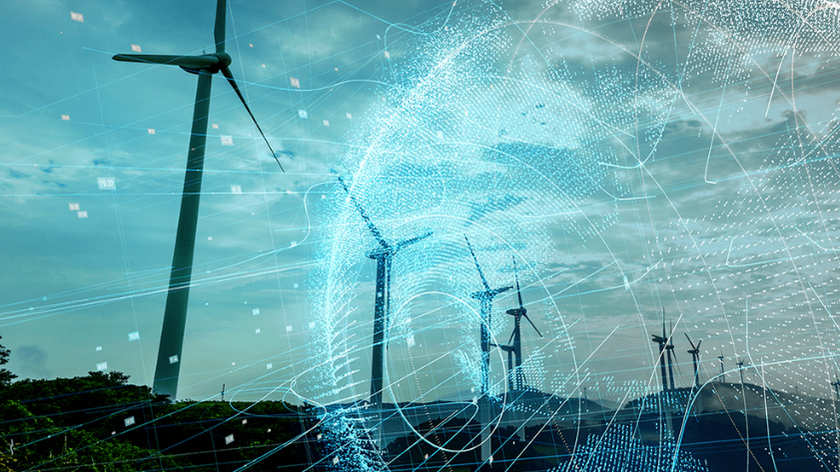The arrival of new technologies and digital transformation has forced traditional power utility sector to reinvent themselves and catch the wave of change to stay competitive. In this article, we will outline the main challenges that these companies will face.
Digital transformation is an opportunity to improve conventionally-offered energy products and create new business solutions and models closely associated with digital technology. A new era has begun with the access, use and analytical possibilities of the huge amounts of data that come from smart meters and the digitalisation of internal operating procedures. Power utilities can directly access consumers through different channels, thanks to new technologies and experiences that allow simpler use of all that information.
At Dexma, we know that it is necessary for utilities to adapt their business model to new technologies and join the digital revolution. Doing so will enable them to keep generating new opportunities and expand their business.
In this article, you will read about DEXMA’s market outlook, and with the experience of working with utilities in the key European markets, the main challenges that these companies will face in the coming years.
1. Stiff competition 
As in most European countries, in the UK, the energy market was deregulated in 1989. The opening of this market has led to tough competition amongst sector companies and given rise to new market players.
The situation has been accompanied by intense shifts in the markets caused by the deeper changes that have taken place over this time, such as:
- the massive entrance of renewable energies into the system
- the changes in many countries’ nuclear policies
- not to mention far-reaching structural changes that have come as a consequence of the financial crisis.
In this context, the entry of new players in the market, with innovative offers for the end customer, has triggered higher customer churn and consequently, a reduction in the commercial margins for electrical energy supply. These diminished margins have led power utilities to look for an alternative, more predictable sources of income. In this scenario, the sale of added-value services, beyond the mere sale of energy, has been the chosen alternative.
The process of change from “energy sales” to “service sales” is not unique to the energy industry: the banking and telecom sectors also offer clear examples of the transformation. In this changing context, power utilities face the challenge of leveraging their customer bases, and the trust those users have placed in them to cover their energy needs, to be the ones who offer them innovative solutions for energy saving and generation, and to be in optimal conditions to compete (or cooperate) with other service companies.
2. High churn rate 
Customers’ tendency to switch energy companies is constantly on the rise. Thanks to tools like Google Trends, we also know that the number of searches related to changing electricity, natural gas or water utility supplier is also growing steadily. In Europe, an annual average of 15% of users switch utilities. Over the past two years, the percentage has risen to 18% in the United Kingdom, and in New Zealand, the churn rate has already reached 25%.
Customers tend to believe that a change of utility company will get them a better deal since the end of the day, the “electricity is the same”; it’s just being sold to them by a different company. This is the paradigm that must change, by making the customer feel special and preventing their indifference toward working with another utility.
Churn rates affect supplier profits in a clear, direct manner. Churn is a problem that utilities cannot ignore. It is important for them to bring this rate down; not only is it a huge threat to their revenue it is also a major opportunity for differentiation and building customer loyalty.
Utilities know this, which is why they continually strive to digitise their processes, offering them through different channels and on an increasingly customer-centric basis. It is necessary to bolster areas such as marketing and customer service that have the customer and their needs as top priorities.
Customer experience will play a key role, as it will enable providers to know what they require and place their exact demand, and the timing of that demand, to meet their needs. Furthermore, differentiation is fundamental to stand out and remain competitive in the energy market.
Following market deregulation, customers are more likely to change their utility supplier. That is why these companies must study their customers to improve their services and attempt to differentiate themselves from one another; the services offered to customers must be tailored to the needs of each user. The success of each utility will be intrinsically tied to its capacity to drive the customer experience.
3. Energy transition: photovoltaic Self-Consumption and Demand Response
A number of studies conclude that the rise in energy consumption and demographic growth will not go hand in hand. In other words, they will not be proportional, with only a 7% increase in 2050.
Energy savings and efficiency policies, an increase in environmental awareness and continued technological improvements will help reach this consumption reduction successfully.
Worldwide, energy consumption will reach its maximum over the next decade, only to reduce radically thereafter. This is because energy efficiency and savings will quickly and significantly be consolidated throughout the world.
Over the coming decade, the amount of energy from renewable energy sources will also increase. Companies’ use of sustainable formulas geared to energy efficiency and based on renewable, non-polluting resources clearly represents a high level of commitment and responsibility towards society. They also help build customers’ trust and brand image.
Thanks to these changes in energy generation and distribution, business models are beginning to be defined that make it possible to connect supply with demand (called “demand response”) directly through smart grids. They also empower consumers with models that enable them to generate energy for their own consumption and export any surplus to the grid. Read this blog post to know more.
Thanks to the energy consumption savings policies, companies will also cut costs, and be able to devote resources to other more productive purposes, fostering the growth of their business. Yet this task must not only be tackled by companies; power suppliers should also play an active role in this energy transformation and transition. This way, they will compensate for reduced energy sales with increased volumes of services linked to the design, installation and operation of self-consumption set-ups.
4. Digital transformation: following the example of the Banking or Telecommunications sectors
In recent years, digital transformation has been taking place in the utility market more radically than in other sectors such as banking (read our related post Are Banks the New ESCOs) or telecommunications (read Ooredoo’s case study) where it was already established.
This is precisely because power suppliers began later in the process of digitising their customer communication channels (for a number of reasons). This is unthinkable in today’s context, so clearly marked by digital technology.
At present, we know from their profiles that customers are much more inclined to use online channels than they were a few years ago.
In our daily lives, we are all immersed in a panorama that obliges us to use digital tools and be totally, and permanently connected through a number of devices.
Consumers need to have a more fluid, personalised experience that they feel comfortable with. What’s more, they’re expecting greater information, with detailed data on their rates and consumption. Essential that companies make their strategies customer-centric, digitising their processes and tools to adapt them to their needs.
In this context, and to an ever-increasing degree, new technologies are an indispensable asset for utilities. Aware of this, utilities have been driven to make a strategic move toward digital transformation. These companies are already using technologies for omnichannel communication with their customers, for administrative procedures related to billing or for changes in the contracted tariffs. This also includes consumption monitoring and analysis tools.
These are just a few examples of the opportunities that utilities may find in digital transformation. Many are making determined efforts to implement these measures in their companies to achieve greater resource efficiency and optimisation. In addition, they achieve improvements in process management and decision-making.
5. From customers to Energy “Partners”
The UK has a stock of 3.9 million single-family households and 38.2 million vehicles.
In an environment in which photovoltaic installations and batteries (domestic or integrated into electrical vehicles) will be increasingly competitive, utility companies will go from seeing “just another customer” to a potential “energy partner”.
Customers will have a much higher value if they work jointly with the utility in their photovoltaic mini-power station or if they let the utility manage the batteries according to the needs of the grid.
Models such as “capacity leasing” or “peer-to-peer” energy sales will be commonplace, giving more relevance to customers than they have had since Thomas Alba Edison created the first electrical power station in New York in 1882, providing service to 85 customers and 400 light bulbs.
6. Climate change and Environmental Responsibility
Awareness of climate change, also known as the “climate emergency”, is becoming more widespread. The implementation of energy savings and efficiency measures, and the use of renewable energies, are constantly increasing. That is why utility suppliers must rethink their strategies, and shift their operations to reach greater levels of environmental stewardship and protection.
When it comes to finding new ways to generate energy through sustainable processes, it’s now or never.
Furthermore, implementing energy sustainability measures will make for major economic benefits. It will generate mass amounts of information with valuable consumption and generation data, making it possible to bring costs down significantly.
To achieve greater sustainability and higher energy savings, utilities should implement digitisation strategies that facilitate the design, implementation and operation of new sustainable technologies in which consumers play a starring role.
Boost your utility, and become the energy manager companies are looking for. Don’t miss out on the digital transformation and energy transition to make your utility into your customers’ most innovative, closest ally. Download the FREE PDF here. ⬇️










One thought on “6 Challenges in the Utility Sector”
Comments are closed.